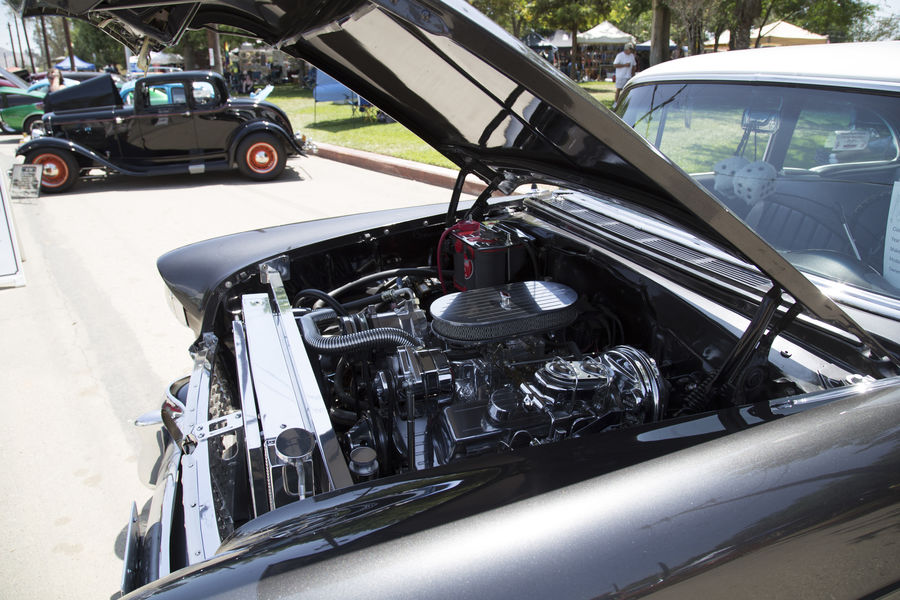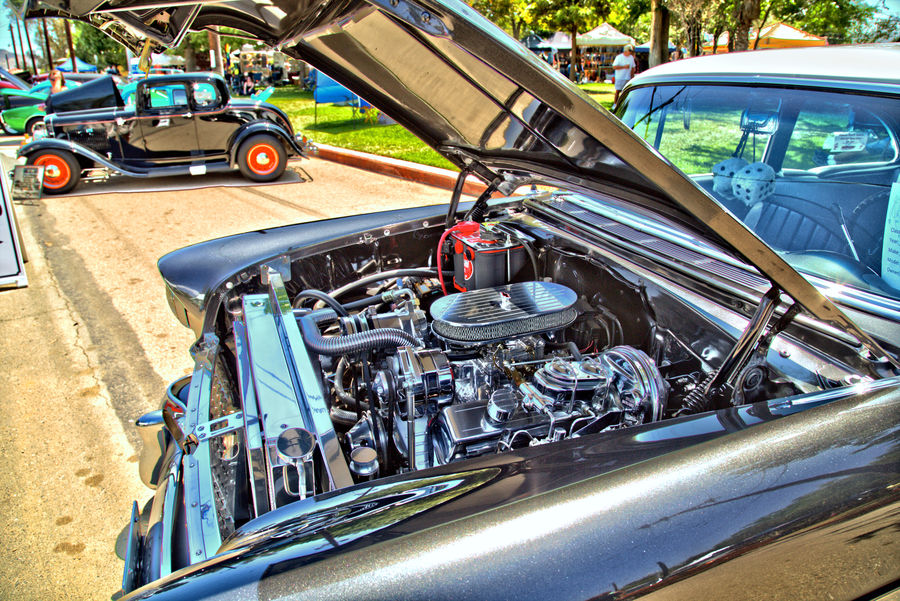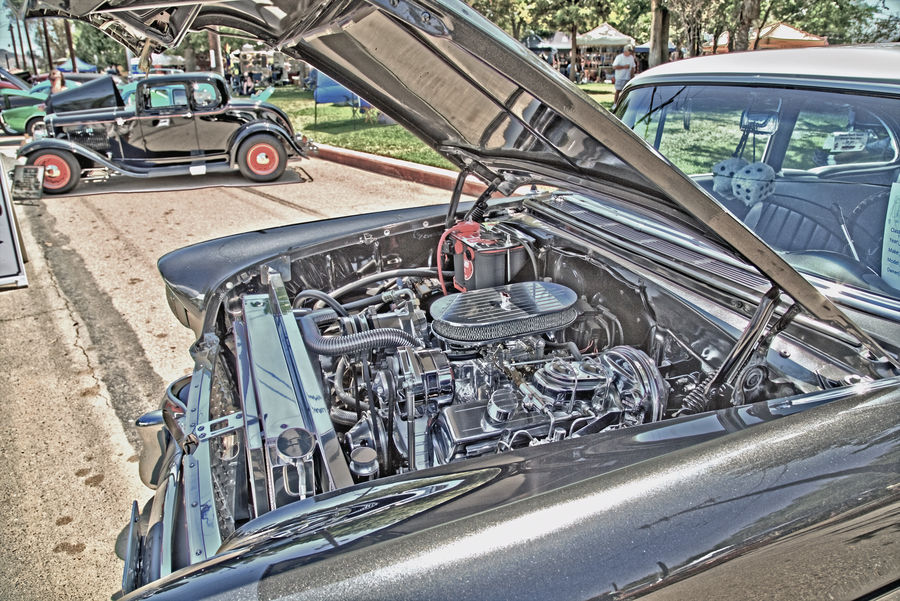High Dynamic Range (HDR)
Aug 29, 2021 12:30:17 #
Rsangha
Loc: Lynchburg, VA
How amazingly high HDR is handles by cell phones - especially the I-Phone 12 PRO. My son showed me some pictures taken by the I-Phone 12 Pro in almost total darkness - and I was really astonished. I own the Canon 6D, Canon 80D and Canon RP bodies with several L series lenses (24-70, 70-200, 100mm F2.8) and none could emulate the HDR displayed by the I-Phone 12 Pro. I generally use Aperture priority and expose for the highlights. But when I tried to use that for shooting a picture of the full moon the surroundings are so dim I can never approach the quality of the I-Phone 12 Pro picture of the full moon with beautiful surrounding sky, foliage etc.
So my question is why cant Canon, Nikon etc do the same in camera pre-processing as these tiny cell phones and produce more acceptable images of scenes with extreme dynamic range!
So my question is why cant Canon, Nikon etc do the same in camera pre-processing as these tiny cell phones and produce more acceptable images of scenes with extreme dynamic range!
Aug 29, 2021 12:44:43 #
Easy answer: sell all your cameras and lenses, and buy a better phone. When your HDR phone images start winning awards against interchangeable lens cameras, you'll know you made the correct decision.
If you reject this advice, then the next option might be: post problematic images in a new thread, storing the original unedited JPEG versions, and ask for help. Even present the phone version so we understand your vision of what you consider a better result.
If you reject this advice, then the next option might be: post problematic images in a new thread, storing the original unedited JPEG versions, and ask for help. Even present the phone version so we understand your vision of what you consider a better result.
Aug 29, 2021 12:48:14 #
CHG_CANON wrote:
Easy answer: sell all your cameras and lenses, and buy a better phone. When your HDR phone images start winning awards against interchangeable lens cameras, you'll know you made the correct decision.
If you reject this advice, then the next option might be: post problematic images in a new thread, storing the original unedited JPEG versions, and ask for help. Even present the phone version so we understand your vision of what you consider a better result.
If you reject this advice, then the next option might be: post problematic images in a new thread, storing the original unedited JPEG versions, and ask for help. Even present the phone version so we understand your vision of what you consider a better result.



Aug 29, 2021 12:57:04 #
Rsangha
Loc: Lynchburg, VA
I am not near my son and his I-Phone 12 Pro so unable to do as you suggested. But will try a new picture with my Cell Phone Samsung Galaxy s10 Plus and the same scene with my Canon RP and the 24-70mm Lens and post both pictures for the Hogs to review and comment! Thanks a lot!
Aug 29, 2021 14:00:11 #
I think it's possible that your phone was cheating by doing exposure bracketing on the fly. With a more level playing field your DSLRs would start to look a bit less outclassed.
Aug 29, 2021 14:05:40 #
Racmanaz
Loc: Sunny Tucson!
R.G. wrote:
I think it's possible that your phone was cheating by doing exposure bracketing on the fly. With a more level playing field your DSLRs would start to look a bit less outclassed.
It's also possible that the OP was viewing the images on the phone's screen itself which will give the impression that it's a high quality image on a tiny screen.
Aug 29, 2021 14:10:42 #
Racmanaz wrote:
It's also possible that the OP was viewing the images on the phone's screen itself which will give the impression that it's a high quality image on a tiny screen.
That can hide a multitude of evils (if that's what the OP was doing). A small screen won't affect the luminosity but it will hide noise from lifted shadows etc.
Aug 29, 2021 14:40:44 #
Rsangha
Loc: Lynchburg, VA
Yes I agree the I-Phone is probably doing exposure bracketing etc, and that I only saw the image on the small screen of the cell phone. When blown up on a large TV screen it will probably show more noise and pixelization. But I suspect if the latest I-Phone does not already perform noise reduction like Topaz and other apps then the next version probably will. To do exposure bracketing on a DSLR probably requires a tripod whereas the I-phone was hand held. So I will be keeping my DSLR and mirrorless camera bodies for the time being - but at 81 I am finding it harder to carry all the weight. Appreciate all your comments and advice.
Aug 29, 2021 14:40:47 #
Rsangha wrote:
How amazingly high HDR is handles by cell phones -... (show quote)
You need to learn the correct way to do HDR with a camera = multiple shots at different settings then blended in software. Actually that is what that phone does, quick shots at different exposures then blended by the software.
Some cameras do it and if things go right the results are very good but the best results are done the old fashioned way. Then many of the photo editing programs have an applet that will take a single shot, split it into usually 3 images and than blend into an HDR shot. Sometimes that gives excellent results and sometimes it doesn't work. Here is a single shot that that method was used on (Corel's PaintShop Pro). It got the HDR part right, but the colors are off and had to be corrected. Not very well corrected, this was in 2016 and the software is much better now. And hopefully my skills, it does have the almost cartoonish "HDR" look that many don't like. People who are really good at it produce HDR without that phony look.
Aug 29, 2021 14:47:07 #
Rsangha
Loc: Lynchburg, VA
Yes I see what you mean by Phony look. Will experiment and see what I get.
Thanks for your response and advice.
Thanks for your response and advice.
Aug 29, 2021 14:49:14 #
Racmanaz
Loc: Sunny Tucson!
Rsangha wrote:
Yes I see what you mean by Phony look. Will experiment and see what I get.
Thanks for your response and advice.
Thanks for your response and advice.
"Phony look"? Pun intended?

Aug 29, 2021 14:53:58 #
Rsangha wrote:
....To do exposure bracketing on a DSLR probably requires a tripod......
If your HDR merging software has auto align, you can shoot hand-held. Of course with hand-held you need to keep the shutter speed up, especially if you plan to use the brightest exposure because that will be the one with the slowest shutter speed, but unless the shadows are badly in need of lifting, I don't use the brightest exposure in the merge.
Aug 29, 2021 15:08:35 #
robertjerl wrote:
You need to learn the correct way to do HDR with a... (show quote)
Hmmm.
I don't care for the second two at all in the set of three.
Aug 29, 2021 15:09:38 #
Racmanaz wrote:
"Phony look"? Pun intended? 

phony as in not real, not phony as in done with a phone.
Aug 29, 2021 15:33:41 #
larryepage
Loc: North Texas area
Rsangha wrote:
How amazingly high HDR is handles by cell phones -... (show quote)
Actually, my Nikon DSLRs (D500, D810, D850) have a function called "Active D Lighting." I'm still learning the gory details of exactly how it works and what it does, but the short version is that it allows an adjustable modification of ends of the sensor's response curve that can result in an additional 2 or 3 stops of dynamic range in JPEG images with a single exposure. The effect is applied at the extremes of the exposure, so normal levels of contrast are maintained in the middle range of tonality. It is quite effective in many cases, especially when shooting in harsh midday lighting. I have no idea which models have it and which do not, nor whether it is available on other camera makes or what it is called. The major benefit is that it provides the extra range without producing the garish look associated with overcooked HDR images.
I have also been using Photomatix software to produce enhanced HDR images from a bracketed set of exposures for the past 10 years or more. LightRoom will also do it, even from a group of raw exposures, although I have found that I almost never like the results from merging raw exposures.. Better results come from just exposing to the right, relying on the dynamic range of the camera, and bringing up the shadows in post processing. The lore here says that tripods are a requirement for HDR, but in 12 years, I've never used a tripod when capturing my bracketed images. Careful camera technique have always been quite sufficient.
There is no question that the cameras in the best of the modern cell phones have some apparently amazing capabilities, but saying that the same thing cannot be accomplished fairly easily with dedicated digital cameras and available software is really neither fair nor accurate. I've been doing HDR with Photomatix since my only camera was a Nikon D200. Because that camera had quite limited dynamic range by today's standards, the additional capability was quite stunning. With today's cameras, it's really more incremental, although the myriad of options available in the tone mapping step (the final step in the process) do provide lots of opportunity to get really nice results. Combining bracketed images to get a wider range of values turns out to be the almost trivial part of the process. Tone mapping determines what the finished product will look like, controlled by how the software accomplishes it and what choices the photographer makes.
Now here's the thing...did my first HDR attempts uniformly produce perfect results? No. Like anything else worth doing, some learning, some understanding, and some practice (while paying attention to what's going on) are necessary. And some experimentation and learning and understanding are also necessary with the processing software. There are some choices that must be made when doing HDR photography. Some work, some don't. And some that work are a lot better than others that work. (See the examples in the post above.)
So if this is really an area that interests you, as opposed to one that just triggered some random thoughts, I'd encourage you to investigate is a little more. Learn what really goes on. Learn the real underlying goals. Speak or write from a position of understanding.
If you want to reply, then register here. Registration is free and your account is created instantly, so you can post right away.






